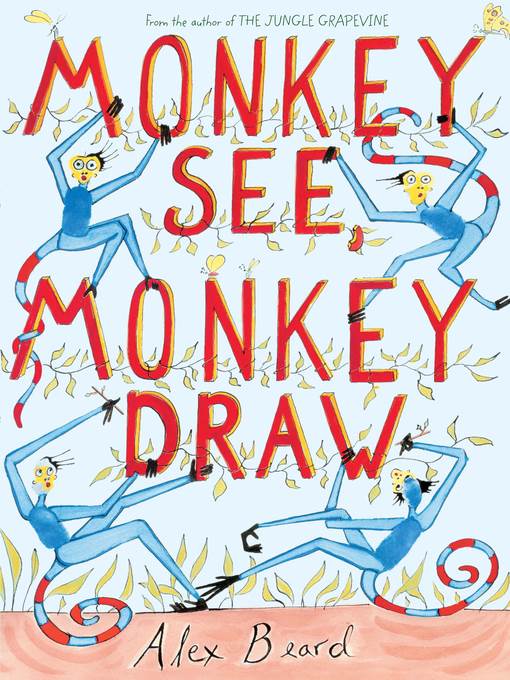
Monkey See, Monkey Draw
کتاب های مرتبط
- اطلاعات
- نقد و بررسی
- دیدگاه کاربران
نقد و بررسی

November 1, 2010
Beard uses a group of enthusiastic, spindly blue monkeys who live in a baobab tree in Africa to challenge readers to rethink art and creativity. These lithe, game-loving animals seem to swirl across the pages in stylized pen-and-ink and watercolor pictures that are both comedic and beautiful (the style is in keeping with Beard's The Jungle Grapevine), and the action spills over into the spreads' borders. When the baobab nut they are playing with rolls into a cave, Elephant leads the monkeys inside, where they discover walls decorated with paintings of animals, based on human handprints or footprints. Elephant imprints his muddy hoof on the wall and turns it into a picture of a monkey, delighting his friends with a new game (the monkeys' pointy handprints become the long legs of a giraffe and the jaw of a crocodile, among other creatures). Beard, meanwhile, demonstrates that this "game" isn't just for children—in several scenes, his monkeys' bodies consist of a human thumbprint. As the monkeys squabble about whose drawing is best,
Elephant encourages them to "paint and draw just for fun." Kids will follow suit. Ages 4–8.

December 15, 2010
Near the Mbuno Hills in Africa, a troop of competitive monkeys learn a lesson in creativity from savvy Elephant. The monkeys love playing games like Ring Around the Rhino, Pin the Tail on the Warthog and Monkey in the Middle. One day Elephant leads the monkeys inside a cave, where they discover splendid paintings of animals created from handprints and footprints. When Elephant shows them how to make their own drawings using mud, handprints and footprints, the monkeys design a new game called Monkey See, Monkey Draw—till Elephant convinces them drawing's not a contest but a joy in its own right. Bold, imaginative and very comical pen, ink and watercolor illustrations rely on line, color, pattern and thumbprints to produce surreal, gangly blue monkeys frenetically cavorting and clambering across the pages. Trim borders focus attention on the main activity of each double-page spread, but monkey tails, arms and legs inevitably spill into margins filled with indigenous flora and fauna. Beard aptly conjures the look and feel of prehistoric cave paintings, inspiring readers to create their own. Wild and wonderful. (author's note) (Picture book. 4-8)
(COPYRIGHT (2010) KIRKUS REVIEWS/NIELSEN BUSINESS MEDIA, INC. ALL RIGHTS RESERVED.)

March 1, 2011
K-Gr 3-A group of monkeys lives at the foot of the Mbuno Hills in Africa. One of their favorite games is Monkey in the Middle, played with a nut from their baobab tree. One day while they are playing with an elephant, the nut rolls into a cave. The monkeys are afraid to go after it, but the fearless elephant takes them inside to look for it. The animals are amazed to find that the cave is lined with drawings of various animals, and that each picture was formed around a hand- or footprint. When they get back outside, the monkeys dip their hands and feet in mud to make their own paintings. Although rain washes them away, Monkey See, Monkey Draw becomes one of their favorite pastimes. Beard uses his thumbprint to make the playful blue monkeys, and his pen-and-ink with watercolor drawings are swirled with color. In the center of each spread is a large black-lined rectangular box. The artwork in the box extends beyond the lines in most cases, but on some pages, the box is used as a frame for the illustration. An author's note talks about Beard's experience making hand- and footprint art. This book could be useful to teach children how to use the technique, but the expressions on the monkeys' faces may be frightening to some readers. Purchase for large art-oriented collections.-Martha Simpson, Stratford Library Association, CT
Copyright 2011 School Library Journal, LLC Used with permission.

























دیدگاه کاربران